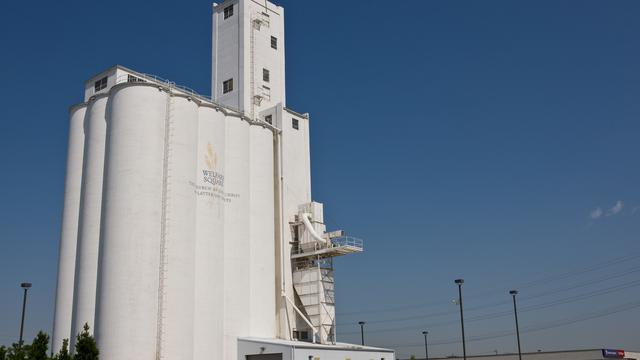
Photo: Welfare Square in Salt Lake City
In the Fall 2012 issue of Philanthropy Magazine, Naomi Schaefer Riley (a former Wall Street Journal religion reporter) accurately describes the inspiration for the Church’s welfare and humanitarian aid programs, what the programs do, whom they serve and how Mormons fund these vast operations.
Riley correctly notes that Latter-day Saints’ volunteerism springs from a divine mandate to help those in need and the fundamental Christian teaching that we are all brothers and sisters.
The Church’s welfare program helps those suffering from such things as unemployment and injury, and “self-sufficiency is at the heart of its mission — both for the givers and receivers,” Riley writes. She mentions that the Church’s Bishops’ Central Storehouse in Utah, a 570,000-square-foot structure completed earlier this year, is at the heart of the Church’s welfare system. Food and supplies in this storehouse are distributed to central storehouses in five other regions of the United States and Canada. From these storehouses, food and materials are sent to more than 200 smaller bishops’ storehouses in communities of those regions for distribution. Ecclesiastical leaders (bishops) of congregations in those communities are able to call in food and supply orders for their members and others who are in need.
Funding for the welfare program, Riley notes, comes in a variety of ways. First, Latter-day Saints keep the biblical practice of tithing, offering one-tenth of their income to the Church. Second, Mormons regularly donate fast offerings, another practice rooted in the Bible. “The Church designates one Sunday every month as a day of fasting,” Riley writes, “to be observed by healthy members by forgoing food and drink for two consecutive meals, and dedicating what would have been spent on those meals to help care for those in need.” Fast offerings help those in local congregations, where Mormon leaders confidentially allocate funds to the needy, with the ultimate goal being eventual self-reliance.
Additionally, Riley writes, many Mormons make donations beyond tithes and fast offerings. Some donate to LDS Philanthropies to fund such things as “the building of wells in Africa, the construction of homes in Mexico, and the creation of a scholarship at Brigham Young University.” Others donate to LDS Charities, which “serves the impoverished and victims of natural and man-made disasters abroad. Its major initiatives include providing clean water, wheelchairs, immunization, vision care, and neonatal resuscitation kits. There is never any proselytizing involved in these efforts, and the vast majority of recipients are not themselves Latter-day Saints.”
Perhaps more impressive than the financial contributions Mormons make, Reilly says, “is the amount of personal time and expertise that successful Latter-day Saints will devote to helping out their struggling neighbors.” She notes that in their book American Grace, Robert Putnam and David Campbell say “Mormons are strikingly more active in giving and volunteering of all sorts, even taking into account their high levels of religious observance.” Related to this, a recent study from researchers at the University of Pennsylvania finds that an active Latter-day Saint volunteers 427.9 hours annually to charitable causes.
All things considered, Riley says the Church’s welfare and humanitarian services show “the world one model for building a large, effective, and private social welfare system — a model that works.”
MormonNewsroom.org contains a many resources that explain the Church’s welfare and humanitarian aid programs, as well as Mormons’ penchant for volunteerism, in greater detail. These include: